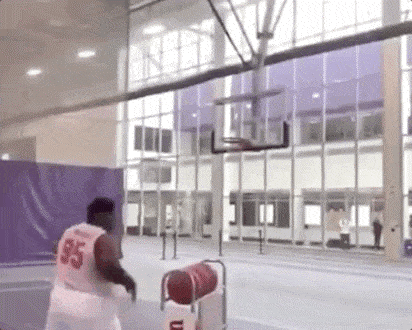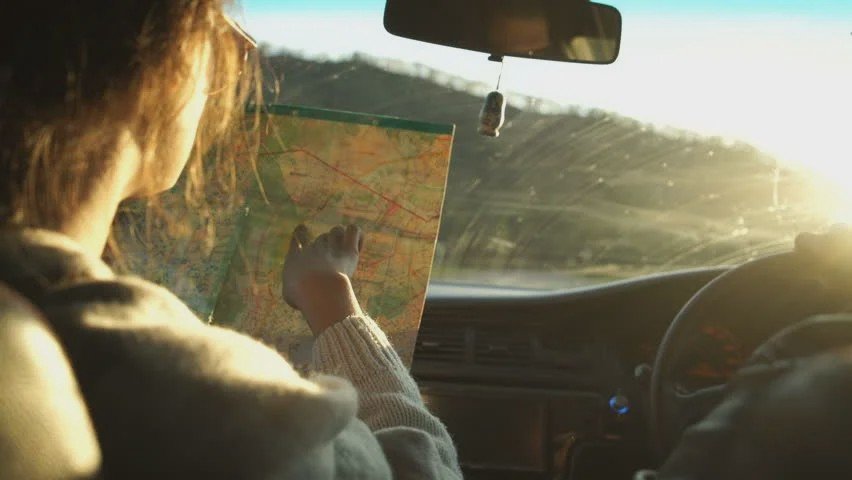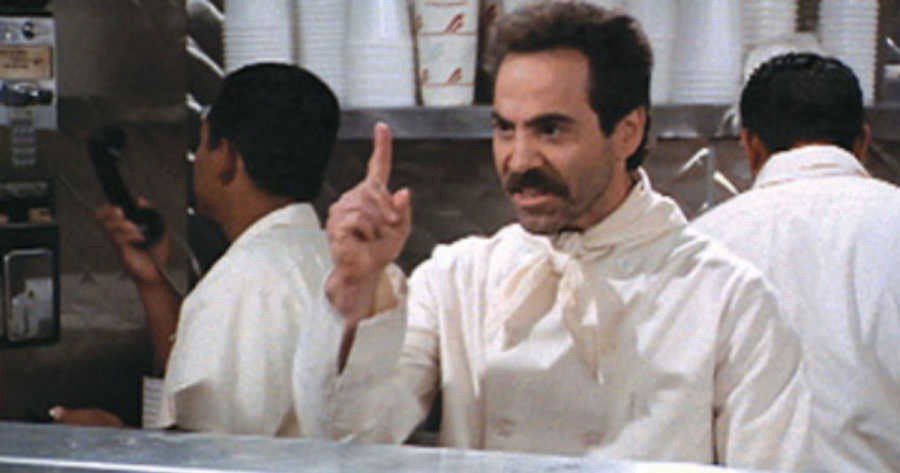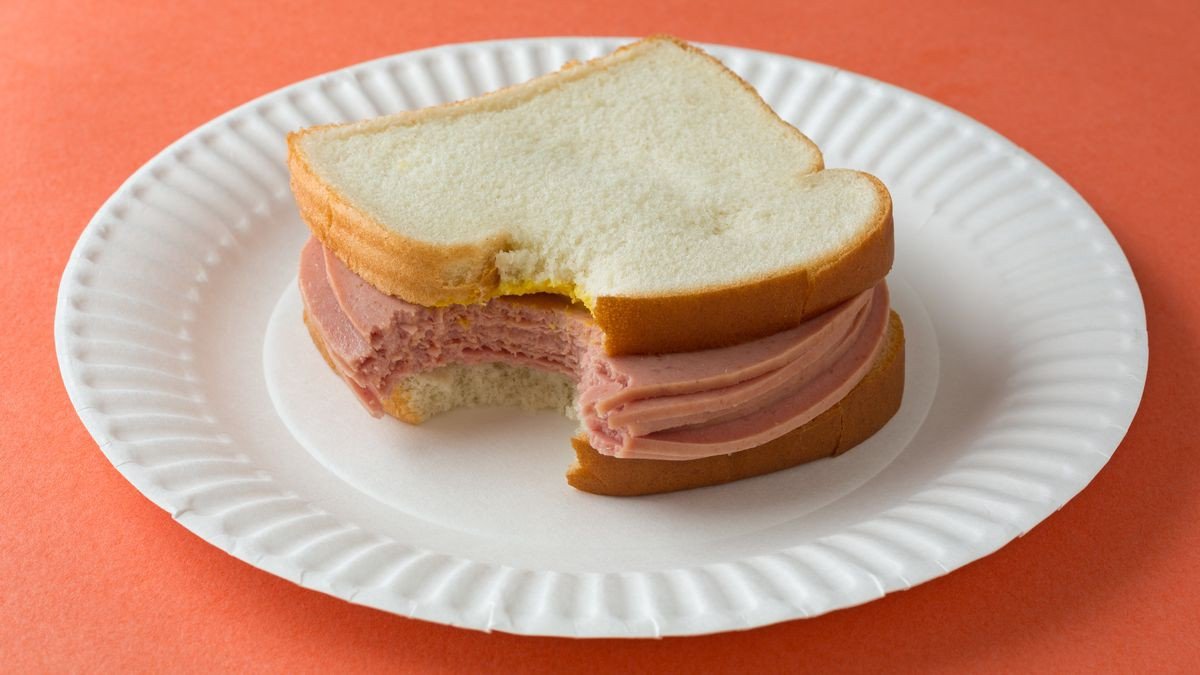I Wish These Existed
Dads, ideas I wish existed that would make fatherhood a whole lot easier.
I wish these existed.
I would pay a small fortune.
Being a dad can be tough.
After a Spring Break vacation filled with carting, loading, wiping, and carrying three kids...
It got me thinking (ok fantasizing) about things that would make life as a dad…
just a wee bit easier.
Here are the 12 things I wish existed as a dad of 3 kids under 5.
1/ “Magnetic onesie”
A baby onesie that clasps shut like a magnetic screen door.
As soon as you pull those little baby legs and arms through the sleeves…
The magnet does the rest and snaps that baby shut.
2/ “Blowout-proof diaper”
How many times has a baby blowout tipped your day into chaos (it always happens at the most inopportune time)?
We need diapers that are impervious to a blowout (catch all the poop no matter what)
What a world it would be if things were blowout free.
3/ “The Slap Diaper”
A diaper that works like one of those slap bracelets.
As soon as that baby bottom lands near, it just snaps on.
No more diaper wrestling.
4/ “Toddler translator”
I’m convinced toddlers are from another planet.
And my inability to understand their language usually ends in toddler rage.
What if a translator could tell us, dads, exactly what our little aliens want?
5/ “Slime-Resistant Shirt”
I lost count of how many times I peeked in the mirror and I looked like Venkman from Ghostbusters.
My shirt covered in snot or spit up.
I need a shirt where the upper half is like Teflon, nothing sticks to it…
That would totally transform my daily appearance.
6/ “Undo button”
Oh man, I’ve been saved so many times by Ctrl-Z (undo) on a computer.
What if life with kids had an undo button?
I would use it like Michael Scott overuses “that’s what she said”.
7/ “Pause Button”
You’re in the trenches changing a diaper and putting out a few fires.
You just need 15 minutes to pull yourself together.
It would be great if life had a 15-minute pause button where my kids would stop and I could pull myself together and soak it up…just 15 minutes.
8/ “Buddy button”
Sometimes I need a rip cord to stop the free fall and find a fellow war hero (a buddy) to share my stories of the trenches with.
It would be great if there were an SOS app that could find another buddy that at that moment was also ready to get away.
9/ “Sleep dust”
Yes, there is melatonin (and whiskey) but they have negative long-term side effects when used as sleep aids.
I would love some dust (a pan) I could slam (sprinkle) my 2-year-old with at bedtime so she would…
To steal a line from Adam Mansbach “Go the F⚪k to sleep”.
10/ “Nighttime Nanny”
I call my middle a werewolf.
Every time there is a full moon (or a moon in any phase) she creeps into our room for the umpteenth time and needs to be walked back to bed.
After these long nights, I wake up feeling like a drank a case of beer.
It would be great if someone or something could walk my little werewolf back to bed, tuck her in so I could get some dreamy sleep.
11/ “Remote Relocator”
If you’re like our family, we limit TV for our kids but they crave it like addicts.
So many times, we’ve hidden the remote like a squirrel, and couldn’t remember which hole in the yard it was in.
All we need is a remote that is equipped with an “I’m here” function so we could find it when we needed it.
12/ "Self-Cleaning Car"
Our van looks like an Atlantic City beach; covered in sand, wrappers, and old discarded toys.
It would be great to have a car that can automatically clean itself inside and out,
so I don’t feel guilty about my wife's daily trip with the Jersey Shore.
My takeaway:
If only these things existed, they would make dadding a little easier.
And I would pay a small fortune.
Tinkerers, inventors, and entrepreneurs, let me know if you come up with any of these.
Dads, what did I miss?
Dads with older kids, are there inventions I will need as my kids age?
Dads, Don’t Make This Common Mistake
Dads, this common mistake might be preventing our kids from thriving, but there's a simple fix.
Dads, stop making this common mistake that might prevent your kids from thriving.
We all want to raise confident and independent kids.
But, like me, you’ve probably used this common, seemingly harmless phrase.
And it might be planting seeds of doubt and fear in our kids.
The great thing is there is a simple fix.
But first, the seemingly benign phrase.
“Be careful.”
Each time we say “be careful,” what we’re really saying is;
“Hey, I'm afraid (fear) you’re going to get hurt,” and “you’re not capable of thinking about the risk, and you need me to remind you.”
Trust me, I’ve said it, but I try not to because…
By saying “be careful,” we’re subtly reinforcing that we fear things and our kids should too.
And we lack trust in their ability to navigate life.
The result is unnecessary anxiety.
Of course, none of us wake up in the morning and declare, “how can I make my kids more anxious, afraid, and a little less confident.”
We all want to raise confident, independent little explorers.
AND we want them to grow up with all their limbs, intact.
So here’s the easy fix.
Instead of “be careful”
Say, “what's your plan?”
But you might think, what if my kid is barrelling toward boiling water?
Or dashing for the busy street. That’s not good, right?
There is a solution for this too. But first, here’s why “what’s your plan?” is the fix.
By using ‘what’s your plan” instead of “be careful,” you’re getting your kids to think about their actions, what they are trying to do, and the potential outcome.
Our goal as parents should be for our kids to assess risk independently.
Not to avoid risk.
Especially as they enter a future that will likely look very different than the one we live in.
With tech changing things daily, our kids will need to be great at assessing risk rather than avoiding it.
If they still don’t see the inherent risk in climbing to the top of a dead tree.
We might add a follow-up question like how are you going to make sure the limb doesn’t break beneath you or how are you going to get down?
This gets them to anticipate and think through potential obstacles or failure points.
Now back to them in immediate danger, like barrelling toward boiling water or dashing for a busy street.
When we dads are babysitting our kids (my wife says, “you don’t ‘babysit’ your own kids”), it is our job to keep them safe.
Sometimes we need to swoop in like superman and save them but then take the time to reflect.
I would argue this is rare, but sometimes our kids have a lapse in judgment and decide they want to play frogger with traffic.
Once you save them, don’t yell.
Simply ask them if they understand why you swooped in.
Ask them what might have happened if you let them complete the action.
Then explain to them how we need to respect things that could hurt us.
Takeaway:
So the next time you go to say, “be careful,” catch yourself and ask your child, “what’s your plan?”
They will likely look at you like you have six heads because they are used to hearing “be careful.”
Consistently taking the “what’s your plan?” approach will give them the confidence to independently assess the risk of things.
They will be more confident, independent, and ready to take on risks.
Because if they’re avoiding risk, they’re avoiding success.
How To Raise Future-Proofed Kids
Ever wonder…geez, life is tough; I can’t imagine what it will be like for my kids?
I don’t have a crystal ball, but things have changed a ton since I was a kid, and I can only imagine that life will look pretty different when our kids grow up.
One of the common characteristics of successful adults is that they’re comfortable with failure and mistakes.
Here’s why.
Success in life is about learning from mistakes.
Chamath Palihapitiya, the controversial billionaire with a rags-to-riches story, said, "life's success is how you control your mistakes. The way you control your mistakes is by making a bunch of mistakes.”
Mistakes are jet fuel for success.
We learn through mistakes because each mistake reduces the number and severity of future errors until we know what is needed to succeed.
As our kids get older, the world around them (including us dads) expects them to make fewer mistakes and yet this is an inherently flawed mindset.
Think about how mistakes lead us to some of our greatest discoveries in life.
Some questionable dating mistakes are how we found our +1.
Mistakes are what lead to thriving new businesses.
Mistakes have uncovered breakthrough products, services, and nuclear fusion.
A culture of mistakes is how our kids become confident and entrepreneurial lil’ badasses ready to tackle whatever the future holds.
So how do we make mistakes as much part of our family tradition as cheering for our favorite football team?
Here are three ways you can start today:
1/ Make mistakes a side dish at dinnertime
Ask your kids how they failed each day (check out the Art of Family Dinner Convo blog).
You, too, can participate by letting your kids know which mistakes you made that day.
“Kids, I thought Scam Bank-Fried was a philanthropist and lost a mound of dirty fiat on the FTX crypto exchange.”
Do this around the dinner table each night to make it routine.
Then ask them what they learned from their mistakes.
By making it part of dinner each day, your kids will learn a tradition of valuing mistakes.
2/ Celebrate mistakes
Treat mistakes as gifts. Celebrate them.
Mistakes are a gift because each one is newly acquired knowledge.
Do this by going a little deeper once your kids share their mistakes. They may even have failed several times that day.
Ask them which mistake was their favorite and why.
Ask them what they learned from their failure.
Celebrating mistakes by talking about them will make them a part of your family tradition.
3/ Don’t throw the flag and penalize
It's easy to think not all mistakes are created equal.
But I would argue it is important how we handle all mistakes, even mistakes that seem blatant or no-brainers, like when my son wakes up in the morning and douses our toilet like an unmanned garden hose.
My instinct is to be like, “SON! You suck at pissing! Sit down next time”!
It is easy for me to default to anger or shame for intentional (taking the base screws out of dad’s office chair) or no-brainer (pissing all over the toilet seat) mistakes.
But this is where a tradition of mistakes can start to erode.
It would be better for me to acknowledge that his aim isn’t good quite yet, and until he learns to hit the bullseye, he will need to clean it up and go back to sitting when pissing.
Our challenge to you:
The ability to embrace mistakes is a key to raising kids that can handle whatever the future throws at them.
Start by making mistakes a tradition by serving them daily at the dinner table. Celebrate them, and don't penalize mistakes, even no-brainers.
Let's get out there and push mistakes like weights (ode to the great poet Ice Cube).
Let ’em Fight, Why Kids That Learn Conflict Thrive
Let ’em fight, why kids that learn conflict thrive.
Have you ever taken your kid to the park when your sweet child suddenly becomes a selfish monster trying to take another kids toy?
So what’s one to do? Jump in and referee? Turn your back? Munch on some popcorn and watch it all play out?
Note: If you have older kids….stay tuned because all still applies with one key point.
Let’s paint a scene that drives home a key point…
Lil’ Jimmy is bumbling from sandbox to swingset and his mom is on him like ‘white on rice’ (this is a dadism from my ‘OG’ father.)
Then lil’ Jimmy gets locked in…on a toy he wants…but…Lil’ Suzy is deep into play with that three-wheeled rusted ol’ dump truck.
My kids only want toys that other kids have. I am sure this could be a law of nature, as dependable as gravity.
Quickly, lil’ Jimmy’s mom becomes a hostage negotiator trying to talk lil’ Jimmy down. Usually what ensues are two kids, one or both in tears, because they are made to share with one another…by their parents.
We all have a bit of lil’ Jimmy’s mom in us. We are so worried that our own Lil’ Jimmy’s might offend another parent or god forbid take the toy from Suzy. It has become the norm for parents to step in and stop any conflict
I’ve got 3 “Lil’ Jimmys” at home and after seeing a LOT of toy conflicts, there’s a better way and here’s what you can do. Lets first start with why we need to remove ourselves from our kids’ squabbles.
The Why
As sure as death and taxes, conflict is a part of everyday life.
ONE. CONFLICT. AFTER. ANOTHER.
I can’t tweet a funny little dadding nugget without someone commenting “harmful.” People seem to be conflict illiterate these days; just scroll your favorite social app for a few minutes. YIKES! (have you SEEN the mysterious pink sauce debate?)
I bet if you stopped to think about your day you would agree it is littered with conflict: at home, on the road, at work, hell…even on the phone with your internet provider.
Now imagine a bunch of lil’ Jimmys, whose parents followed them around through childhood, resolving their conflicts for them.
Then these lil’ Jimmys grow up and find themselves in a world where even adults struggle to handle conflict…look out!
But I am here to tell you there is hope, and it starts with you and I.
We dads need to show our kids how to handle conflicts. We need to be active coaches. And give our kids the tools to resolve conflict safely and on their own.
You might be thinking:
“My kid is too immature to resolve conflict.”
Or
“I don’t want my kids to hurt anyone or be the playground bully.”
Good points.
And I agree. It is our job as dads to keep our kiddos and the other kids at the playground safe. So we should never let it get to fisticuffs.
Here are the four things you can do with your kids that will give them to tools to be conflict heavy weight champs.
NOTE: We try to make research more dad-like but if you’re interested, HERE is what the smart PhDs have to say about resolving conflict.
Wrestle…with feelings first. I know, I know. Gushy, gross feelings. But just like changing diapers…you gotta do it. Let's make it a little less gushy and gross. Accepting your kids' feelings. When your kids feel heard, they calm down and are more likely to listen. Here’s how to do that:
Give a high five to the emotion. No one can turn off emotions. The key is in how we handle them. So tell your child it is ok to be mad, angry, sad or whatever the current flavor is.
Tag them into their emotions by helping them name the feeling. “You sound like you’re mad,” or “You seem angry because you did not get that toy you wanted.”
Get them off of the top ropes by helping them through the big part of the emotion. Being there for them and remaining calm, you will help them down off the big part of emotion (the high ropes).
Now for landing the ‘leg drop’ on what is causing the emotion. “You both want to play with that deflated ball” or “you are mad because Lil’ Suzy has a new best friend.” This is required to move onto the next step. NOTE: As they get older it's likely that the conflict will have a few more layers you will need to dig through.
Be Bob Saget…not Half Baked Bob….Full House Bob: Danny Tanner. Help them be good communicators by teaching them how to communicate. Suggest telling lil’ Suzy what they want or suggest they listen to lil’ Suzy’s desires at the moment. And if lil’ Suzy doesn’t want to give that shit up right now, help them understand what that means.
Flick That Lightbulb On - Ask them how they might resolve it on their own. Kids like this autonomy; it’s good practice and self esteem building when they feel you trust them to problem solve on their own. 2 years and under won’t be able to do this (unless you have a lil’ genius) and in that case congrats to you! Be patient. If they are struggling, toss out some ideas but let them decide which idea to go with. It takes practice but you would be surprised…it works. And if we start early…yes even at 18 months old. And give our kids a chance, especially at home with their siblings (where there is less pressure to jump in), we can make them champs.
Model Conflict Resolving at Home - Be an example and show your kids how to handle conflict at home with your partner and even with your kids when you want them to do something but they just won’t budge. Most times, looking at myself in the conflict-resolution-mirror can be both personally helpful and humbling.
Bonus Tip: This isn’t just for kids under 5. These same 4 things can be used with older kids too. The earlier you start, the less your child will need your help resolving more gnarly conflicts as they get older. With older kids you should expect more from them. Expect that they will be able to come up with ideas to resolve and that they communicate their wants and feelings. Let them come up with the solutions without your help…sit back…your job is to validate and offer support in THEIR resolution process.
Now let's get out of our kids' conflict ring and observe like a coach from the ropes….where we only get to check in and coach between rounds. They won’t win every round but the more they spar the more likely they will become conflict champions.
Here’s How You Can Help Your Kids Succeed
“I can’t do it!”…Why This Is The Perfect Place For Dad Kid Magic
Do conversations with your kids ever go like this?
Me: How did your ski lessons go today?
Child: I can’t do it….I don’t want to go.
One of my biggest fears as a father is a child that gives up when things get tough.
Kids that learn to overcome the hard stuff are more confident and successful. While there isn’t always an obvious recipe to creating kids that push through…
Here are 4 things you can do to teach your kids to never give up and why this is so important…
It Starts With The Why:
There is a four letter words that has been getting a whole lot of buzz in parenting circles and describes taking on life’s hard stuff…
$#it —--—————————————-----> Grit.
Grit is a bit like being up with a sick child all night and still going to work, cutting the grass and playing ball with your kid while you’re totally exhausted.
Angela Duckworth’s TED talk (with >26M views) defines Grit as:
Where passion and perseverance meet to achieve long term goals.
Ms. Duckworth is clear to point out that Grit is NOT:
Natural Talent
Hotdog anyone?
Or
Luck
phew….
Duckworth’s research showed that Grit had a higher correlation to success than natural talent or intelligence (her research followed West Point Cadets and National Spelling Bee Contestants).
Put more simply…. MORE GRIT = MORE SUCCESS.
If the goal is to raise successful kids and grit is the way to achieve that goal…
Then how do we get grittier kids?
Here are the 4 ways to tackle grit:
Be Mufasa (from the Lion King)
Get Hyped About Real Learning
You’re On Fire…What Do You Do?
Start With A Pillow Fort
Be Mufasa (Demanding Yet Supportive)
Check out this clip of Mufasa giving a master class in being a dad (75secs).
Mufasa is a classic Authoritative style parent. This form of parenting is ideal for creating grit in kids. There is plenty of evidence to back that this style produces the best outcomes in children:
“Studies have found that authoritative parents are more likely to raise confident kids who achieve academic success, have better social skills and are more capable at problem-solving.” (From Make It)
Now for a quick visual on Authoritative parenting, along with the other 3 styles.
Do Be:
Demanding set high expectations but support your kids to meet those expectations. And have rules with natural consequences.
Don’t Be:
Too Tough on yourself. It is hard to always ‘dad’ in the top right corner. We are playing the long game here and small adjustments over time lead to success.
Al Bundy from Married…with Children (Neglectful), Frank Reynolds from Always Sunny (Permissive) or Red Forman That 70s Show (Authoritarian).
Get Hyped About Real Learning
There has been a lot written and researched about enjoying the process of learning (growth mindset) from uber intelligent people (Dr. Carol Dweck). This enjoyment in process of learning is one way to build grit.
However, this isn’t the cram for a test kind of learning.
That process that growth mindset people learn to enjoy goes something like this:
Hit challenges -> get feedback->learn from failures and mistakes-> apply the learnings->achieve the goal.
We try to get our kids hyped and to love this process by doing these 5 things:
Help our kids see challenges as fun puzzles to solve.
Go all House of Pain “Jump Around” about failures (celebrate them) (see HiLoFunFailFav post).
Help your kids see their success not against their buddies but against their own progress.
Praise the hard work not the outcome - instead of saying “good job” when your kid gets an A on a test, praise all the time and effort they spent studying.
Start using the word ‘yet’ - “I can’t do the monkey bars”. Our response: “You might not be able to do them ‘yet’ but if you keep trying you will.”
You’re On Fire…What Do You Do?
No literally…if you were on fire what would you do?
Stop, Drop and Roll. If you grew up in the 80s or 90s this phrase and set of actions was drilled into our 5th grade brains.
I would argue that there is a more important 3 word phrase we should etch into our kids’ brains about the process of learning.
We teach our kids a simple and memorable way to think about learning and goal achieving….
We use Pause, Think and Re-Try (doesn’t quite roll off as smoothly as Stop, Drop and Roll). For another approach I like Ray Dalio’s learning loop from his book Principles.
Obstacles are a constant when setting goals. Once our kids hit an obstacle on their way to a goal we ask them to Pause. We encourage them to Think about the reasons they hit an issue by asking ‘why’ and suggest they Think of ways they could Re-Try to overcome the barrier. And then Re-Try. We encourage repeating until the goal is met.
Start With A Pillow Fort
Your 4 year old is going to work towards different goals than your 10 year old.
Meet them where they are. Start small.
Let them feel the satisfaction of setting a goal, hitting an obstacle, pausing, thinking, re-trying and eventually achieving.
This should be simple at first… like building a pillow fort.
Let them build. Watch as a pillow wall tumbles. Ask them ‘what would you change so it doesn’t happen again?’ Let them try again. Eventually they will get it.
Without further ado, it’s time to get in the ring with those kiddos and get gritty. With any amount of luck, you just might fail a little, which you now know is a good thing if you've been paying attention.
Why You Should Play Hooky With Your Kids
Why You Should Play Hooky With Your Kids and other ways you can connect with your kids.
mmmmmm…..hookkkkkkkyyyy….
Your kids probably don’t love school.
Unless you are incredibly blessed, you probably don’t love your job.
Obviously, both of you need to go to work and school.
But…
Not everyday!
An Annual Hooky Tradition
Photoshop Skills Not Included With Annual Hooky Day
Imagine this:
You take a single vacation day. You show up to your kid’s school, surprise them, and take them on an adventure.
You guys do something totally left-field.
Your kid is a skater?
You drive him(or her!) to the best skatepark in your area, one that is typically a little too far for them to bike to.
The best part?
They know it’s coming, but they don’t know when…
The Set-Up
Mask Not Required For Kidnapping Your Kid From School
You create a shroud of mystery surrounding the mythical Yearly Hooky Day:
“You won’t know when, and you won’t know what, but one day each year, I am going to pull you outta school and we are gonna do something EPIC!”
The curiosity and excitement builds in your little schemers…
“But what are we gonnnnaaa dooooo???”
It’s a secret.
From then on, everyday they have school, they will have it in the back of their minds.
Excitement growing.
Knowing, “Today could be the day…”
Why A Hooky Day
Make your kid “stock-image happy”
Look.
School is important.
It teaches kids an unfortunate truth about life: every single day, you gotta do shit you don’t want to.
But…
They are kids!
Put yourself in their shoes, or your own shoes, or just simply get back into the mind of a child.
How many days did you spend daydreaming about someone swooping you up, and taking you away from the dullery to go explore?
You will make that daydream tangible.
Plus, I promise you one thing:
Your kids will not forget those magical days.
The Five-Step Art of A Family Dinner Convo
The Five Step Art Of A Family Dinner Convo
“Instruction was splendid, pa-pah”
Do your dinner conversations sound like this?
“How was school today?”
Good.
“Anything fun happen?”
Nope. Normal.
Let’s take a step back.
The fact that you are having a dinner conversation is awesome!
Eating together is not simply family bonding time. According to Harvard,
“Regular family dinners are associated with lower rates of depression, and anxiety, and substance abuse, and eating disorders, and tobacco use, and early teenage pregnancy, and higher rates of resilience and higher self esteem.”
Ok! You’ve got the family dinner down, but you want to have more, let’s say, engaging conversation.
Here is a five-step guide to asking your kids questions they will be excited to answer.
This isn’t a formula; think of this more as a framework. If you feel like getting crazy and modifying it, do it! It will probably keep your little conversationalists on their toes.
HiLoFunFailFav
I apologize for the awkward mnemonic device, but if you say it fast, it does(kinda) roll off the tongue.
As I said, this isn’t a formula to spit at your kids. This is a framework for you to use!
Hi-Highlight of The Day
Here, you give your kids the opportunity to tell you what made their day awesome, if only for a moment.
Examples:
What was the best part of your day? (and you aren’t allowed to say “going home!”)
Did you learn anything today that blew your mind?
Did you see any squirrels water skiing?
Lo-Lowlight Of The Day
Time to let your kid get Emo
Give your kids the opportunity to act like an adult, and complain.
Examples:
What SUCKED about today?
What’s the most USELESS thing you learned today?
If you could do today over again, what would you leave in the past?
Fun-Funniest Thing That Happened At School
Let’s see them try to make us learn…
Give your kid the chance to show off his storytelling skills.
Example:
What was the CRAZIEST thing you saw at school today?
What made you ROFL today?
P.S. (Don’t worry I had to look up what it meant)
P.S.S (Yes, be a corny dad and say “ROFL” out loud, like roff-all).
Fail-Failure Of The Day
Get like Mike!
Here, you give your kids the opportunity to show you they understand failure is normal. This is also a perfect opportunity to start by modeling this question.
EXAMPLE OF MODELING:
Today I had such a hard time finding the right words for this blog post. It felt like my brain was deep-fried. After I meditated though, I felt way better and crushed it in like 45 minutes. What about you guys?
WHAT YOU ASK AFTER MODELING:
Did you get stuck at all today?
What was super hard in class today?
Fav-Favorite Food/Drink
Might as well be a 3 michelin star meal…
Ok, this one is an easy home run. No explanation needed.
Example:
What was the BEST thing you ate today?
Did you drink anything DELICIOUS at school?
How To Use It
This isn’t a checklist in which you have to hit each category in order. This is a tool: if the conversation is flagging, come back to it for guidance.
Oh by the way…
Don’t forget to give them a chance…awkward silence is what brilliance is made of…
Now go engage those little monsters! Make them spill their guts. If they are hesitant, show them how! Model how a conversation works. You are already doing the right thing by having a family dinner, now make it fun!
The 9 Do’s And Don’ts Of A Father-Son Roadtrip
The 9 Do’s And Don’ts Of A Father-Son Roadtrip plus a bonus
The Open Road. Limitless Possibilities. The Roadtrip might be the quintessential American vacation. While taking the entire family out to Joshua Tree is awesome, the Father-Son roadtrip can be an unforgettable-moment-making-machine.
To help make sure your unforgettable-moment-making-machine doesn’t become a future-resentment-making-machine, here are The 9 Do’s And Don’ts Of A Father-Son-Roadtrip.
DO: Make Your Son Lead Navigator
His Two New Friends: Rand & McNally
Give him an atlas. Tell him: You are the navigator.
Not only will he revel in the weight of imagined responsibility, he will be growing his Spatial Intelligence, which will help in the future when he’s signing up for Geometry class.
DON’T: Be The Roadtrip Dictator
“No Bathroom Stops For You!”
Nothing kills curiosity faster than these four words: Because I said so.
Frame this roadtrip as an adventure. That means being open to his suggestions(within reason).
Which brings me to my next point…
DO: Allow Time For Spontaneous Adventures
“It’s Wayyyyyy More Impressive In Person”-You Guys Explaining The Pics To Your Wife
This isn’t the cross-country mission to college you took when you were 18.
Is your son ridiculously excited to see The World’s Largest Ball Of Sisal Twine?
Do it!
The fun of a roadtrip is the capacity for spontaneous adventures.
You aren’t on a bullet train. Take advantage of what makes a roadtrip special.
DON’T: Pass Through A Major City During Rush Hour
“How many more minutes, dad?”
If road trips are all about feeling the wind in your hair (if you still have some), nothing deflates the mood faster than bumper to bumper traffic.
If you know you have to pass through a major city, do your best to do it early in the morning, or late at night.
DO: Take A Peek Under The Hood Before Embarking
…Or Have The Pro’s Do It
If you thought some traffic killed all of your momentum, wait ’til your transmission craps out in the middle of northern Idaho.
Trust me, you do not want to be stranded in Kooskia for three days.
DON’T: Be A Cheapskate
Not Pictured: The Laxatives Necessary After 3 Straight Baloney Sandwich Days
Baloney sandwiches are great, but a real meal every once and awhile is essential to making sure that your road trip is not entering future-resentment-making-machine territory.
Splash out on at least one real meal a day.
Both your bowels and your son will thank you.
That being said, another great way to save money is…
DO: Bring Camping Supplies!
Long Exposure Selfie Not Included With Tent
While hotel stays can be an essential recharge after a long day crammed in the car, spending the night under the stars can be one of those moments your kid will never forget.
Plus, this isn’t an ultralight thru-hike of the Appalachian Trail.
Bring all the gadgets you want.
Bring that heavy cast iron griddle.
Make Smashburgers in Yellowstone.
DON’T: Check Your Emails
Is It Worth Your Joy?
Before you go, make sure that you have taken all of the steps necessary to unplug.
By being confident you aren’t forgetting something, you fully immerse yourself in the moment.
(Your kid will appreciate it, also)
DO: Give Your Kid Disposable Cameras And Hire Him As Your Photographer
You’re Out-Of-Frame, Dad!
Again, this is an opportunity to make your kid feel like he’s contributing towards the mission.
Plus…
Novelty of a Film Camera + The Mystery of How The Pics Will Turn Out =
Fun lesson in delayed gratification.
Now, all of this has been fun, but whatever you do……
BONUS: DO NOT USE THE ROAD-TRIP TO GIVE “THE TALK”
Don’t Do It, Man
If you don’t want this trip to forever be associated with the in’s and out’s of puberty, save “the talk” for a day you don’t plan on doing anything fun.
Let this trip be memorable for all of the right reasons, and none of the awkward ones.











































